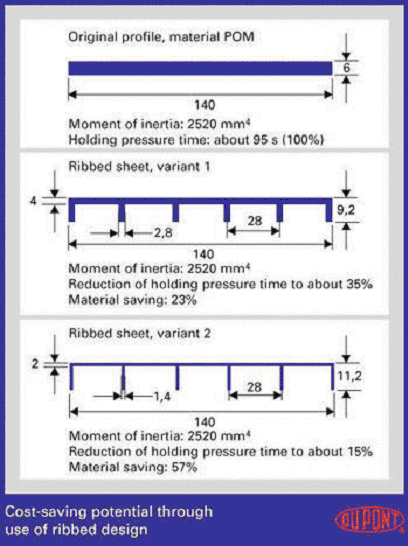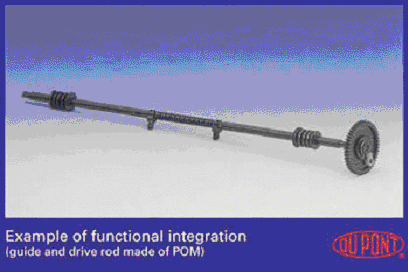|
|
|
说明:双击或选中下面任意单词,将显示该词的音标、读音、翻译等;选中中文或多个词,将显示翻译。
|
|
|
1) expense module design

成本模块设计
2) cost module

成本模块
3) Module Design

模块设计
1.
The module design of pharmaceutical superfine pulverization matched up GMP;

符合GMP的超细粉碎模块设计
2.
Warehouse Logistics Management System——into and out of the Management Module Design;

仓储企业物流管理系统——入出库管理模块设计
3.
The functional structure,the module design of ERP system in the above enterprises are emphasized,it also elaborate the characteristics and the effect.
着重介绍了毛纺企业ERP系统的功能结构、模块设计及系统特点,指出了在实施应用过程中应注意的问题。
4) model design

模块设计
1.
Data capture model design of network security based on Honeypot;

基于Honeypot网络安全技术的数据捕获模块设计
2.
At first it analyses the system needs,and makes the model design,and finishes the design and development of the system database,at last makes the system.
首先对该系统进行了需求分析,接着进行了模块设计,然后完成了数据库的设计和开发,最后进行了系统的具体实现。
5) design module

设计模块
1.
Discusses the CAD design of a boiler house by analysing the special feature of a boiler house and puts forward the design concept of integration of design resources,three-dimensional mod-elling of equipment,integration of design process and flexibilization of design modules.
通过对锅炉房设计特点的分析,对锅炉房CAD系统进行了探讨,提出了“设计资源集成化、设备模型三维化、设计过程一体化、设计模块柔性化”的设计思想。
6) modular design

模块设计
1.
The advantages of the “toy bricks”type modular design are expounded with load carrying structure of the COMBINO ○R carbody of the low floor LRV as an actual example.
以低地板轻轨车 COMBINO○R车体承载结构为实例 ,阐明了采用“积木”式模块设计的优
2.
Firstly, the strict-feedback nonlinear systems with unknown virtual control coefficients b_i have been studied and the problem of its inverse optimality has been solved, that isThe new solvable theorem of inverse optimal gain assignment problem has been proposed through the method of modular design for the original system.
本论文的内容安排如下:第一部分把上述严格反馈系统进一步推广为具有未知虚拟控制系数b_i的严格反馈系非线性统并研究其逆最优问题,即第二部分对于推广之前的系统利用模块设计方法提出新的逆最优增益配置定理。
补充资料:塑胶件十大设计窍门之八节约成本设计
节约成本设计
低成本设计
价格是一个设计要素
设计者对塑料零部件最终的成本负有大部分的责任。他的决策预先决定了生产、模具制作和组装的成本。后期的修正和优化通常是昂贵和不可行的。
原材料性能影响成本
充分发挥塑料原材料特性的优势,在许多方面可以节约成本。
§ 多功能一体化设计
将几种功能汇集在一个零部件上,可减少零件数量。
§ 运用低成本组装技术
卡扣,焊接装置,固定装置,双料注塑技术等。
§ 利用自润滑特性
减少对额外和持续润滑油的需要
§ 免却表面处理程序
塑料能着色、耐化学品和耐腐蚀、电器及热绝缘等性质。
§ 结核作用
同系列的原材料有不同的结晶周期,这是因为结核剂在熔融冷却阶段产生加速结晶效果。 成品设计影响成本 除了以上提到的,注意以下各点能够进一步节约成本。
§ 壁厚
优化壁厚分配可以影响原料成本,节省生产时间。
§ 模具
双面模具可以减少对开数量。
§ 公差
要求过高的公差会增大产品的不合格率和质量管理成本。
§ 原料
采用低变形聚合物来减少翘曲变形问题(如在玻纤材料中加入适量矿物),选择快定型或快固化原料可以减少成型周期和冷却时间,
 见图1
按生产各步骤成本比较
当注塑零件从注射机中脱出时,应立即准备装配,不需要任何额外的处理。如果需要进行后处理,总体塑料成本则经常可会相等于金属成本。
 见图2
设计决定生产成本 壁厚的增加并不总能增大强度,却意味着生产和原料成本的增加。
半结晶性热塑性塑料在 固化时容积会有很大收缩。在保压阶段,这种收缩必须由连续的熔融进料来补偿。每毫米壁厚的保压时间大约为:
§ 聚甲醛树脂:8秒
§ 非增强聚酰胺66:4-5秒
§ 增强聚酰胺66:2-3秒(用于高达3毫米壁厚) 典型应用举例 金属设计必须进行机械加工,并经常通过许多装配环节,才能完成单一部件,与之相反,塑料加工科技则能提供可观的成本节约机会。
 见图3
图3中,牵引棒、弹簧、锯齿、卡扣和轴承都为一次注射成型。而同样的金属设计则需要不少于5个独立元件来组装,并且当轴杆与活塞连接时,还需要润滑。实际上,在这一环节使用聚甲醛树脂便可以不用另加润滑剂。
说明:补充资料仅用于学习参考,请勿用于其它任何用途。
参考词条
|










